
Just imagine a city which has been ‘lost’ for thousands of years; there are no evidences of its existence but consists of unique temples, tombs and other buildings that are carved out of sandstone cliffs. The city hidden in the giant red mountains and vast mausoleums was discovered by a young Swiss explorer Johan Ludwig Burckhardt in 1812. At its true value, it is one of the greatest wonders wrought by Nature and Man. Petra in Greek means ‘rock’. As the city is carved out of the sandstone cliffs, it is well known as the ‘rose red city’. A city of rocks was settled by the Nabataeans, who were the industrious Arabs about 2000 years ago, making it an important junction for silk, spice and other trade routes that linked China, India and southern Arabia with Egypt, Syria, Greece and Rome.
Petra is located at Ma’an Governorate in Jordan. Enclosed by tall towering rocks and by a perennial stream, Petra lies between 30°19’N latitude and 35°26’E longitude. It controls the main commercial routes, which pass through it to Gaza in the west, to Bosra and Damascus in the north, to Aqaba and Leuce Come on the Red Sea, and across the desert to the Persian Gulf. According to some demonstrations, these areas were controlled by floods and so the Nabataeans used dams, cisterns and water conduits to control these floods.
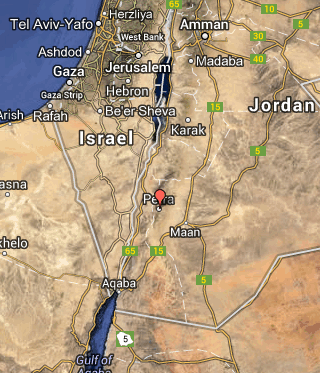
Entrance to Petra is through a narrow gorge, which is over 1km in length and is on an 80m high cliff. At the end of the cliff lies Al-Khazneh, the Treasury. The massive palace is about 30m wide and 43m high. It is called the Pink Ruins of Petra as it is carved out of sheer, dusky pink rock-face sandstone. The treasury consist of the tomb of an important Nabataean king and reflects the creativity of the engineering genius of the ancient Petra.
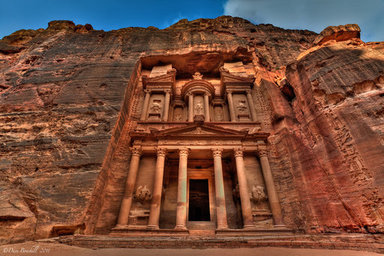
Though the city of Petra was found relatively late, evidence suggests that few settlements had already begun in and around since the eighteenth dynasty of Egypt. A sanctuary existed there in 1550 to 1292 BCE. However, very little is known about the Pink Ruins of Petra, certain aspects about it are still a mystery. The Nabataeans who were the nomadic people of Petra settled in Petra in around 4th century BC. They built the Treasury. As the land was strategically located, the Nabataean architects cleverly constructed a series of dams, cisterns and pipes the provided the city with much-needed water from a set of natural springs. The Pink Ruins flourished during the Nabataean kingdom. The purpose of the construction is still unclear. It was called as the Treasury because it was believed that the king had hidden treasures in the tomb. Although the Nabataean kingdom was strong, it could not withstand the then ancient superpower, Rome. The Romans took over the control of Petra. As the new trade routes opened, the activities at Petra declined. By 350 AD, Petra had its own Christian bishop. Later, some of the tombs were remodelled as churches and a new cathedral was built.
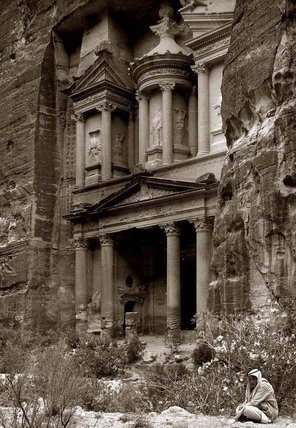
After its discovery, the Pink Ruins of Petra was declared as one of the Modern Seven Wonders of the World by the UNESCO in the year 1985 due to its unique features as mentioned below:
The Siq: The Siq was a narrow gorge that protected the city from the invaders for hundreds of years. The silver of a canyon, it is so narrow that it appears almost completely cut-off from the sun. It is lined with the ancient water channels along with beautiful bas-reliefs on the steep rock walls.
The Treasury: Built since the first century, the structure is built as a tomb. However, some Bedouins believed that an Egyptian pharaoh had hidden some treasures at the top of the building and hence is known as the Treasury.
Petra at night: The Siq and the Treasury are lit with about 1,800 candles on Mondays, Wednesdays and Thursdays. There is a Bedouin music concert inside the Treasury courtyard.
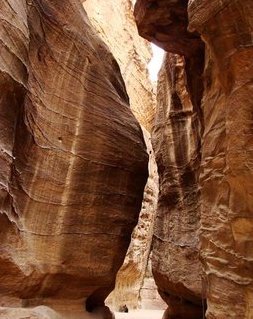
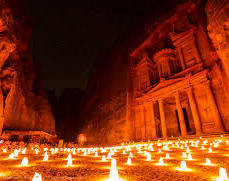
As it was built and constructed centuries ago, it is vulnerable to the following threats:
-
Collapse of the structures
-
Erosion due to improper rainwater drainage
-
Weathering from salt upwelling
-
Improper restoration of the ancient structures
-
Unsustainable tourism


